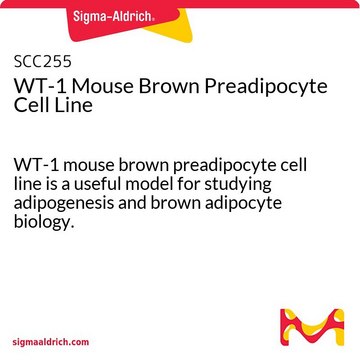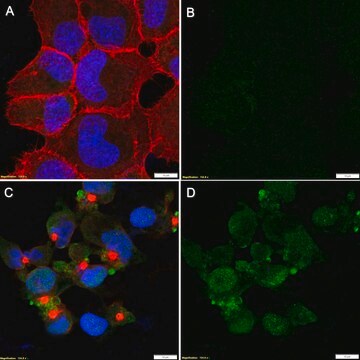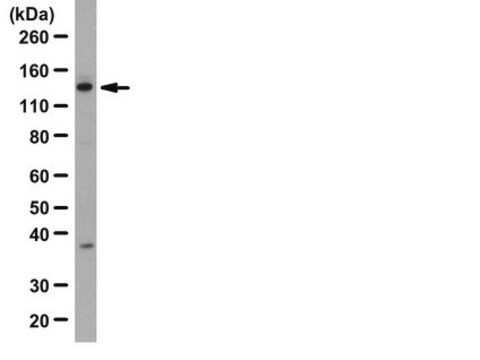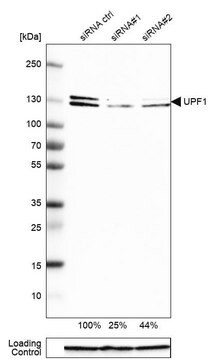07-1016
Anticorpo anti-fosfo-Upf1 (Ser1127)
from rabbit, purified by affinity chromatography
Sinonimo/i:
Regulator of nonsense transcripts 1, ATP-dependent helicase RENT1, Nonsense mRNA reducing factor 1, NORF1, Up-frameshift suppressor 1 homolog, hUpf1
About This Item
Prodotti consigliati
Origine biologica
rabbit
Livello qualitativo
Forma dell’anticorpo
affinity isolated antibody
Tipo di anticorpo
primary antibodies
Clone
polyclonal
Purificato mediante
affinity chromatography
Reattività contro le specie
mouse, human
Reattività contro le specie (prevista in base all’omologia)
chicken (based on 100% sequence homology), zebrafish (based on 100% sequence homology), yeast (based on 100% sequence homology), bovine (based on 100% sequence homology), rat (based on 100% sequence homology)
tecniche
immunoprecipitation (IP): suitable
western blot: suitable
N° accesso NCBI
N° accesso UniProt
Condizioni di spedizione
wet ice
modifica post-traduzionali bersaglio
phosphorylation (pSer1127)
Informazioni sul gene
human ... UPF1(5976)
Descrizione generale
Specificità
Immunogeno
Applicazioni
Saggio di inibizione con peptide: un lotto rappresentativo alla diluizione 1:1.000 ha bloccato la proteina fosfo-Upf1 (Ser1127) in cellule NIH3T3 trattate con caliculina A e acido okadaico.
Immunoprecipitazione: 5 µg di un lotto rappresentativo hanno determinato l'immunoprecipitazione di fosfo-Upf1 (Ser1127) in cellule NIH3T3 trattate con caliculina A e acido okadaico.
Qualità
Western blotting: una diluizione 1:1.000 di questo anticorpo ha rivelato la proteina fosfo-Upf1 (Ser1127) in 10 µg di lisato di cellule NIH3T3 trattate per 30 minuti con caliculina A (50 nM) e acido okadaico (500 nM).
Descrizione del bersaglio
Altre note
Non trovi il prodotto giusto?
Prova il nostro Motore di ricerca dei prodotti.
Codice della classe di stoccaggio
12 - Non Combustible Liquids
Classe di pericolosità dell'acqua (WGK)
WGK 1
Punto d’infiammabilità (°F)
Not applicable
Punto d’infiammabilità (°C)
Not applicable
Certificati d'analisi (COA)
Cerca il Certificati d'analisi (COA) digitando il numero di lotto/batch corrispondente. I numeri di lotto o di batch sono stampati sull'etichetta dei prodotti dopo la parola ‘Lotto’ o ‘Batch’.
Possiedi già questo prodotto?
I documenti relativi ai prodotti acquistati recentemente sono disponibili nell’Archivio dei documenti.
Il team dei nostri ricercatori vanta grande esperienza in tutte le aree della ricerca quali Life Science, scienza dei materiali, sintesi chimica, cromatografia, discipline analitiche, ecc..
Contatta l'Assistenza Tecnica.








